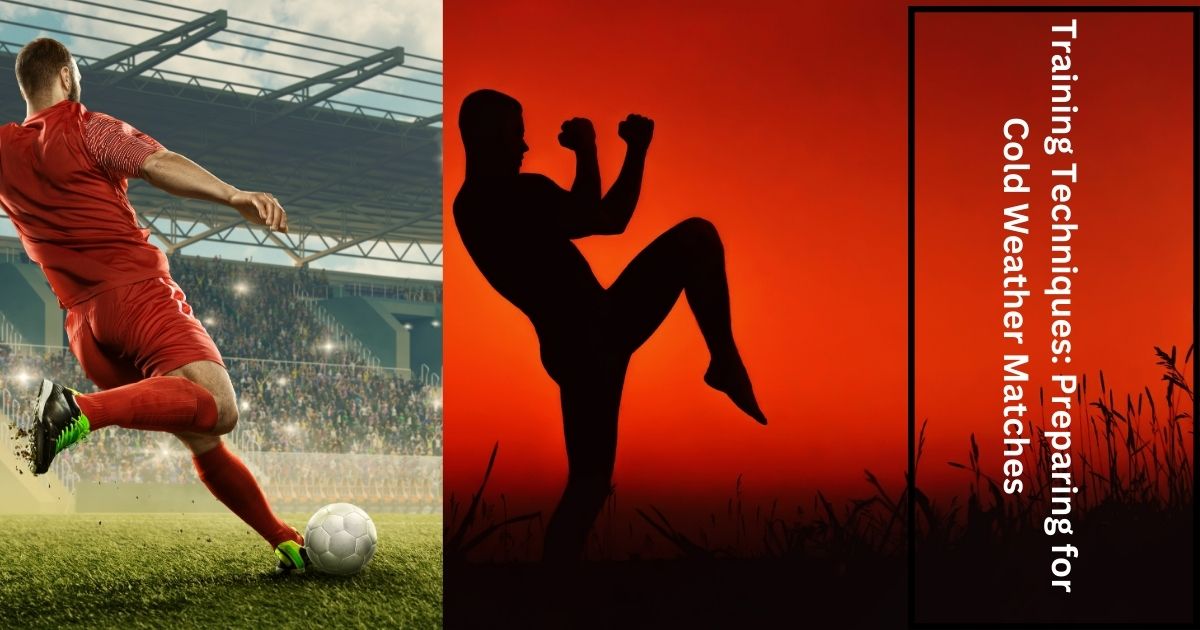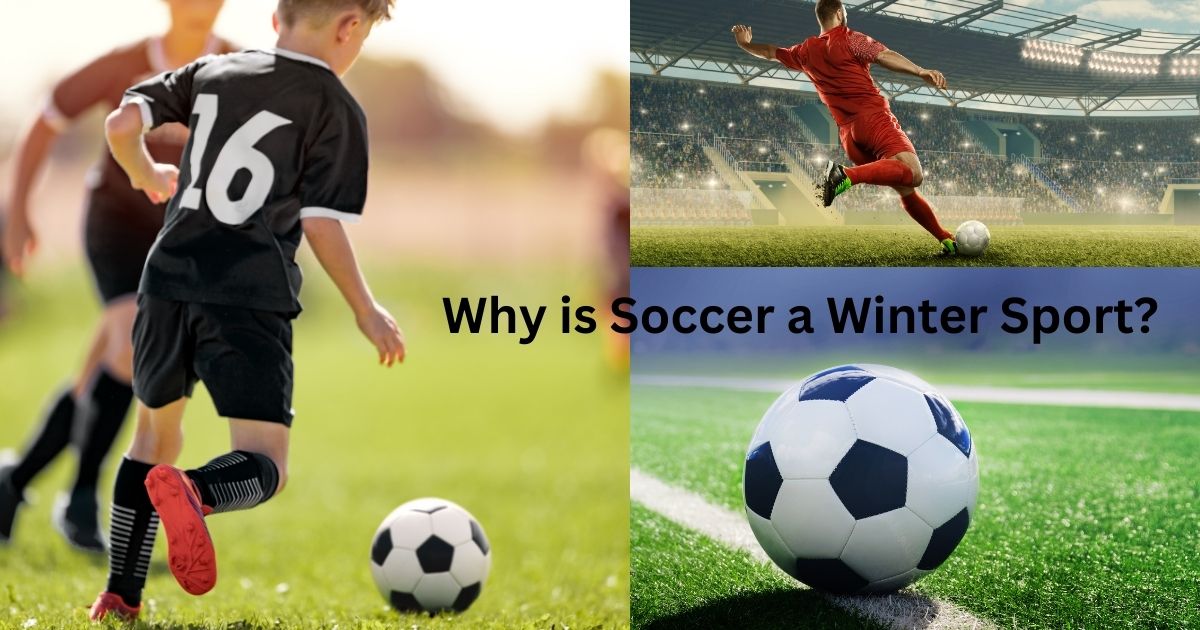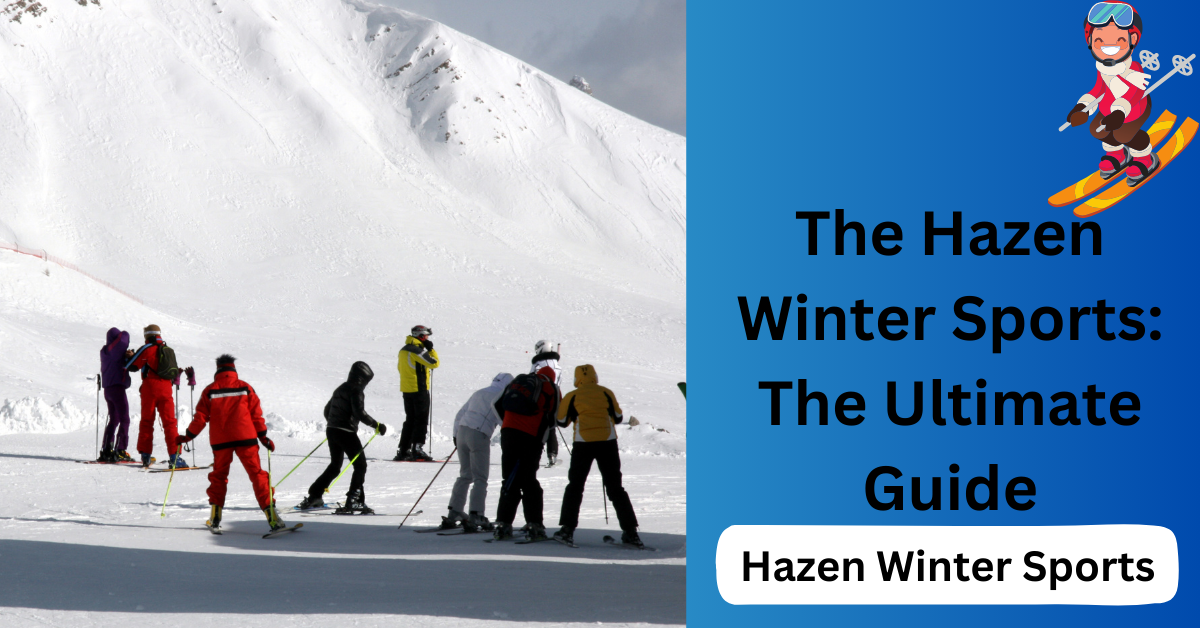Winter soccer captivates fans and players alike, changing the amusement into a exciting exhibition beneath chilly skies. As temperatures drop and areas gotten to be covered in snow, the don takes on a particular character that both challenges and invigorates competitors.
The charm lies not fair in the adrenaline of competing in cold conditions, but moreover in the camaraderie fashioned among partners and the energetic back from fans braving the chill. In numerous societies, winter soccer is more than fair a diversion;
it encapsulates convention, versatility, and community soul. Nearby alliances and worldwide competitions alike exhibit the excellence of the don amid the colder months, drawing in differing groups of onlookers energetic to involvement the fervor.
Key Takeaway
- Season Timing: In Europe and other areas, soccer seasons generally run from late summer time to spring, aligning with the chillier months.
- Weather Adaptability: Soccer may be performed in various weather situations, making it suitable for winter play.
- Cultural Norms: Many nations have a protracted-standing tradition of playing football for the duration of winter, with set up leagues and competitions.
- Field Conditions: In colder climates, snow and ice can have an effect on play, however many teams adapt by means of the usage of artificial pitches or preserving fields.
Historical Context: The Evolution of Soccer in Winter
The development of soccer in winter can be followed back to the game’s initial days in the nineteenth hundred years, fundamentally in Britain. At first, soccer was played all year, yet winter matches were much of the time impacted by cruel climate, prompting deferred games and player security concerns.
Over the long haul, associations adjusted by planning less matches in winter or involving canvassed contributes a few districts. The presentation of fake turf in the late twentieth century additionally moderated weather conditions issues, considering more predictable play.
Today, winter soccer differs internationally, for certain districts embracing the cold while others adjust their seasons as needs be.
Historical Origins: Where Did Soccer Come From?
Soccer, known as football in many nations, has roots that follow back more than 2,000 years. Old civic establishments in China, Greece, and Rome messed around including kicking a ball. In any case, the advanced type of soccer arose in Britain in the nineteenth 100 years.
In 1863, the Football Affiliation (FA) was shaped, normalizing rules and isolating soccer from rugby. This laid out the groundworks of the game as far as we might be concerned today.
The game immediately acquired prominence, spreading to Europe and then some, prompting the development of different associations and the foundation of FIFA in 1904 to administer global play.
Why is Soccer Played in the Winter?
Soccer is played in winter in light of multiple factors:
- Worldwide Ubiquity: In numerous nations, soccer is a significant game, and winter associations are fundamental for keeping up with commitment and rivalry all year.
- Social Custom: In locales like Europe, winter associations have verifiable importance, with many clubs and rivalries going back more than hundred years.
- Environment Varieties: Various nations have changing environments; for instance, winter soccer is normal in Europe, while in hotter areas, associations might change their timetables to stay away from outrageous intensity.
- Framework Upgrades: Advances in field innovation, like fake turf and warming frameworks, consider better playability in winter conditions.
- Fan Commitment: Winter matches can draw in devoted fans, making a lively air, even in colder months.
Generally speaking, playing in winter has turned into a fundamental piece of the soccer schedule in many areas of the planet.
How Can Players Improve in Soccer During Winter?
Players can work on in soccer during winter by:
- Indoor Preparation: Use indoor offices for expertise drills and little sided games to remain dynamic.
- Wellness Molding: Spotlight on strength, spryness, and intense exercise to keep up with actual wellness.
- Specialized Abilities: Work on spilling, passing, and shooting in controlled conditions to refine strategies.
- Strategic Mindfulness: Study game film and examine procedures to further develop independent direction.
- Warm-Up Schedules: Carry out legitimate warm-ups to forestall wounds in colder circumstances.
- Sustenance and Recuperation: Keep a decent eating routine and focus on recuperation to keep energy levels high.
By joining these methodologies, players can keep fostering their abilities really all through the cold weather months.
The Psychological Benefits of Playing Soccer in Cold Weather

The Psychological Benefits of Playing Soccer in Cold Weather
Playing soccer in chilly climate offers a few mental advantages:
- Strength Building: Confronting brutal circumstances can upgrade mental sturdiness and flexibility in players.
- Group Holding: Chilly climate frequently cultivates a feeling of kinship as colleagues cooperate to conquer difficulties.
- Expanded Concentration: Players might foster more noteworthy fixation and concentration as they adjust to the novel requests of winter conditions.
- Supported Temperament: Active work, even neglected, discharges endorphins, assisting with combatting occasional blues and work on generally mind-set.
- Accomplishment and Fulfillment: Effectively preparing or playing in troublesome weather conditions can make a feeling of achievement and lift certainty.
These variables add to a balanced mental encounter, upgrading both individual and group elements.
Soccer’s Popularity: Why It Thrives Regardless of Season
Soccer flourishes no matter what the season because of multiple factors:
- Worldwide Allure: As the world’s most famous game, soccer has a huge following that traverses different societies and districts.
- All year Contests: Many associations work in various seasons, permitting fans to ceaselessly draw in with the game.
- Versatility: The game can be played in different circumstances, from indoor offices to open air fields, obliging various environments.
- Local area and Custom: Soccer cultivates solid local area ties and customs, keeping fans connected paying little mind to climate.
- Youth Advancement: Soccer projects and institutes frequently run all year, guaranteeing youthful players proceed to develop and learn.
These variables make a hearty environment that supports soccer’s fame over time.
Global Perspectives: Winter Soccer Around the World
Winter soccer fluctuates broadly all over the planet, impacted by provincial environments and social practices:
- Europe: Many associations, similar to the Head Association and Bundesliga, go on through winter, frequently confronting cold and blanketed conditions. Clubs might plan matches on ends of the week to limit weather conditions influence.
- North America: In the U.S. what’s more, Canada, outside soccer seasons commonly stop in winter, with players frequently moving to indoor associations to keep up with abilities.
- South America: Nations like Brazil and Argentina for the most part have milder winters, taking into consideration all year play, however a few associations change timetables to keep away from the most smoking months.
- Asia: Nations like Japan and South Korea might have winter associations, while others, similar to China, may see a break because of colder temperatures.
- Africa: In areas with warm environments, winter doesn’t fundamentally influence soccer plans, permitting constant play.
- Australia: Soccer is played throughout the late spring months, with winter devoted to different games like Australian principles football.
These worldwide points of view feature the flexibility of soccer, guaranteeing it stays lively and drawing in, no matter what the season.
Regional Variations: How Different Cultures Embrace Winter Soccer
Various societies embrace winter soccer in one of a kind ways:
- Northern Europe: Nations like Sweden and Norway have associations that adjust to chilly climate, with games frequently played on fake turf.
- Focal Europe: In countries like Germany and Poland, winter breaks are normal, yet preparing proceeds inside to keep up with player wellness.
- North America: Indoor soccer associations thrive in the U.S. also, Canada, permitting players to prepare all year regardless of cruel winters.
- South America: Nations like Argentina play all year, with milder winters that don’t disturb the soccer schedule.
- East Asia: In Japan and South Korea, winter associations exist, yet a few groups relocate to hotter areas for preparing.
These territorial varieties reflect how various environments and societies shape the colder time of year soccer experience.
Weather Conditions: Challenges Faced by Players
Players face a few difficulties in winter soccer, including:
- Cold Temperatures: Chance of hypothermia and diminished execution because of low internal heat level.
- Snow and Ice: Tricky surfaces can prompt wounds and influence interactivity.
- Decreased Perceivability: More limited light hours and cloudy skies can obstruct perceivability during matches.
- Field Conditions: Frozen or sloppy pitches can make play troublesome and increment the gamble of wounds.
- Injury Dangers: Cold muscles are more inclined to strains and injuries without appropriate warm-up.
These circumstances expect players to adjust their preparation and readiness techniques to remain protected and serious.
Impact of Weather: How Cold Conditions Affect the Game
Cold circumstances influence soccer in more than one way:
- Player Execution: Chilly climate can diminish muscle flexibility, prompting decreased speed and dexterity.
- Ball Conduct: A colder ball is firmer, influencing its bob and direction, which can change interactivity techniques.
- Field Conditions: Frozen or snow-covered pitches can restrict development and control, making passing and spilling more troublesome.
- Expanded Wounds: The gamble of strains and injuries ascends as players may not heat up as expected in chilly temperatures.
- Mental Concentration: Players might battle with focus because of distress, influencing independent direction and by and large execution.
These variables by and large change how the game is played and the techniques utilized.
Field Conditions: Managing Pitches in Winter
Overseeing contributes winter includes a few techniques to guarantee playability. Janitors frequently use turf covers to shield grass from ice and snow, while normal upkeep incorporates clearing snow and ice.
Legitimate waste is critical to forestall waterlogging on defrosting fields, and many clubs put resources into warming frameworks or change to counterfeit turf to limit weather conditions influence.
Standard assessments and changes assist with keeping up with ideal circumstances, permitting matches to continue securely notwithstanding winter difficulties.
Cultural Significance: Winter Soccer Traditions
Winter soccer customs hold social importance in numerous districts. In Northern Europe, for example, merry matches are in many cases played around special times of year, encouraging local area soul. In nations like Britain, the Boxing Day installations are a longstanding custom, drawing in huge groups.
In South America, a few associations go on through gentle winters, underlining the game’s all year significance. Moreover, nearby winter competitions or agreeable matches frequently act as get-togethers, supporting local area bonds and commending the game regardless of occasional difficulties.
Fan Engagement: The Role of Supporters in Winter Matches
Allies assume a critical part in winter matches by giving support and keeping an energetic environment notwithstanding cruel circumstances. Their presence can lift player confidence level and make a feeling of local area.
Fans frequently connect through imaginative shows, serenades, and outfits, showing their commitment even in chilly climate. Also, winter matches can fortify fan dedication, as shared encounters in testing conditions encourage further associations with the group and individual allies.
In general, energetic fans are fundamental in making winter soccer occasions exuberant and critical.
Economic Impact: How Winter Soccer Boosts Local Economies
Winter soccer helps neighborhood economies by driving income through ticket deals, product, and food and drink deals at matches. Neighborhood organizations, for example, lodgings and cafés, benefit from expanded people walking through from fans going to games.
Occasional competitions and occasions can draw in the travel industry, further animating financial action. Moreover, interest in offices and foundation for winter play makes occupations and improves local area assets. By and large, winter soccer fills in as a critical financial driver in numerous locales.
Player Health and Safety: Ensuring Well-Being in Cold Weather
Guaranteeing player wellbeing and security in chilly climate includes a few measures. Appropriate warm-up schedules are fundamental to plan muscles and lessen injury risk. Wearing suitable attire, for example, dampness wicking layers and warm stuff, directs internal heat level.
Hydration stays urgent, even in colder circumstances. Mentors ought to screen players for indications of hypothermia or frostbite, and instructional courses might be acclimated to limit openness to outrageous virus. These techniques by and large upgrade player security and prosperity during winter soccer.
Training Techniques: Preparing for Cold Weather Matches

Training Techniques: Preparing for Cold Weather Matches
Getting ready for chilly climate matches includes explicit preparation strategies, for example, consolidating dynamic warm-ups to upgrade muscle adaptability and diminish injury risk. Players ought to rehearse on comparative surfaces to mimic winter conditions, zeroing in on ball control and dexterity.
Building endurance through cardiovascular activities keeps up with execution regardless of colder temperatures. Furthermore, executing drills that accentuate cooperation and correspondence can upgrade on-field union in testing conditions.
Ultimately, teaching players on legitimate layering and hydration procedures is fundamental for ideal execution and wellbeing.
Technological Advancements: Gear for Winter Soccer Performance
Mechanical headways in gear for winter soccer improve execution and wellbeing. Dampness wicking and warm textures keep players warm and dry, while lightweight, protected coats give security without forfeiting portability.
Particular spikes with better footing assist with exploring frigid or sloppy pitches. Developments like warmed insoles and gloves further develop solace in chilly circumstances. Furthermore, shrewd wearables screen player wellbeing and execution, taking into consideration better administration during winter matches.
These progressions altogether support players in keeping up with max execution all through the colder time of year season.
Tactical Adjustments: How Teams Adapt in Winter
In winter, groups make strategic changes in accordance with adjust to colder and possibly elusive circumstances. Mentors frequently stress a more safe style of play, zeroing in on strong guard and fast counterattacks to limit gambles.
Groups may likewise change arrangements to focus on soundness and ball control on testing pitches. Furthermore, preparing may incorporate drills that recreate winter conditions, upgrading players’ capacity to deal with the ball and settle on choices in antagonistic climate.
In general, these variations assist groups with keeping up with adequacy and wellbeing during winter matches.
Future Trends: The Evolution of Soccer as a Winter Sport
As soccer keeps on developing as a colder time of year sport, a few patterns are forming its future. Propels in innovation, for example, further developed field surfaces and execution improving stuff, are making winter play more open and charming.
Furthermore, a developing accentuation on player wellbeing and wellbeing in cool circumstances is prompting upgraded preparing conventions and stuff planned explicitly for winter climate. Besides, expanded fan commitment through imaginative telecom and occasion encounters is attracting bigger groups to winter matches.
As worldwide interest in soccer extends, these patterns will probably set the game’s noticeable quality in winter sports culture, guaranteeing its proceeded with development and variation in the colder months.
Success Stories: Players Who Excel in Winter Conditions
Numerous players have succeeded in winter conditions, exhibiting their flexibility and ability in testing conditions. From unbelievable figures like Diego Maradona, who flourished in blanketed matches, to contemporary stars like Cristiano Ronaldo,
who reliably performs well regardless of chilly climate, these competitors have exhibited strength and greatness. Their examples of overcoming adversity feature individual ability as well as the significance of preparing and groundwork for winter play.
As these players keep on motivating people in the future, they represent how embracing winter conditions can prompt striking accomplishments on the pitch.
Comparative Analysis: Local Leagues vs. International Competitions
Neighborhood associations and worldwide contests in soccer present unmistakable elements and difficulties, particularly in winter. Neighborhood associations, like the Chief Association or Bundesliga, commonly keep a reliable timetable, with groups playing through the cold weather months.
This encourages major areas of strength for an association and considers normal fan commitment, yet additionally expects groups to adjust to cruel weather patterns consistently.
Conversely, global contests like the UEFA Champions Association or World Cup frequently occur in assigned windows, permitting groups to zero in on execution without the customary drudgery of association play.
These occasions can feature players under high-tension circumstances, yet they may likewise include travel to fluctuating environments, affecting player acclimatization.
While neighborhood associations underscore continuous rivalry and local area inclusion, worldwide competitions feature maximized execution and worldwide perceivability.
The two settings require different strategic methodologies and arrangements, mirroring the remarkable difficulties presented by winter conditions.
The Future of Soccer as a Winter Sport
The fate of soccer as a colder time of year sport looks encouraging, driven by a few key patterns. Progresses in innovation, like better counterfeit turf and warmed pitches, are making winter play more attainable and charming.
As player security turns into a need, developments in gear — like warm dress and concentrated footwear — are assisting competitors with performing better in chilly circumstances.
Besides, there’s a developing interest in growing winter associations and competitions, empowering more districts to embrace the game all year. Fan commitment is additionally developing, with upgrades in communicating and advanced encounters that attract bigger crowds to winter matches.
As worldwide environment changes and locales experience differing atmospheric conditions, soccer’s versatility will be urgent. The game’s proceeded with development as a colder time of year movement vows to upgrade its fame and openness, guaranteeing it stays a critical piece of the games scene all through the colder months.
Why is Soccer a Winter Sport?
| Reason | Description |
|---|---|
| Season Timing | Soccer leagues generally run from late summer to spring, coinciding with winter months. |
| Weather Adaptability | The sport can be played in a variety of weather conditions, including cold temperatures. |
| Cultural Traditions | Many countries have historical practices of playing soccer during winter, influencing scheduling. |
| Field Maintenance | Use of artificial pitches and techniques to maintain field conditions during cold weather. |
FAQs About Why is soccer a winter sport?
Why is soccer played in winter?
Soccer is played in winter to keep up with the game’s all year advance and draw in fans, as many associations go on through the colder months.
How do weather conditions affect winter soccer?
Chilly climate can affect player execution, ball conduct, and field conditions, expecting groups to adjust their techniques and preparing.
Are there any specific challenges for players in winter?
Yes, players face challenges such as cold temperatures, slippery surfaces, and increased injury risks, making proper preparation essential.
What adaptations do teams make for winter matches?
Groups frequently change strategies to accentuate guard and speedy counterattacks, and they might adjust instructional courses to recreate winter conditions.
How do fans engage with soccer in winter?
Fans frequently show commitment by going to matches notwithstanding the cold, making a dynamic air and partaking in winter-themed occasions.
Are there benefits to playing soccer in cold weather?
Playing in colder circumstances can fabricate mental sturdiness and strength, and numerous players flourish in winter conditions.
Conclusion
All in all, soccer’s development as a colder time of year sport features its flexibility and persevering through prominence across different environments. Regardless of the difficulties presented by chilly climate, headways in innovation,
player security conventions, and strategic transformations have improved the experience for the two players and fans. The continuous obligation to keeping up with all year commitment through neighborhood associations and worldwide rivalries highlights the game’s social importance.
As soccer keeps on flourishing in winter conditions, it encourages flexibility and local area soul as well as opens new open doors for development and advancement later on.
















Leave a Reply